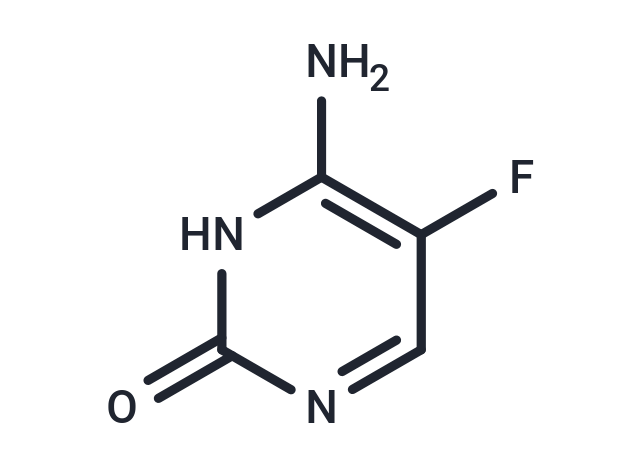Shopping Cart
- Remove All
 Your shopping cart is currently empty
Your shopping cart is currently empty

Flucytosine (NSC 103805) is a pyrimidine compound and a fluorinated cytosine analog exhibiting antifungal activity.

| Pack Size | Price | Availability | Quantity |
|---|---|---|---|
| 1 g | $48 | In Stock | |
| 1 mL x 10 mM (in DMSO) | $50 | In Stock |
| Description | Flucytosine (NSC 103805) is a pyrimidine compound and a fluorinated cytosine analog exhibiting antifungal activity. |
| In vitro | In A/JCr mice infected with Cryptococcus neoformans, the combined treatment of Flucytosine with monoclonal antibody 2H1 proved to be more effective than monotherapy, significantly reducing pulmonary colony formation. |
| In vivo | Lucytosine (≥1.25 mg/L) inhibits the growth of C. neoformans in Sabouraud glucose broth. |
| Kinase Assay | Microdilution method: The culture media used are RPMI 1640 with glutamine, without bicarbonate and phenol red, buffered with morpholinopropanesulfonic acid (MOPS) (0.165 M, pH 7.0). Two-fold serial dilutions of Flucytosine (0.06-64 μg/mL) are prepared and dispensed in 50 uL aliquot, in flat-bottom 96-well assay plates which are kept frozen at -70 °C in sealed plastic bags until used. The inoculum is prepared spectrophotometrically and standardized to a concentration of 1.0-5.0 × 103 cfu per mL. A 50 μL volume of this suspension is used to inoculate each well containing 50 μL of the double concentration of Flucytosine to be tested. Once inoculated, each well therefore contains 100 μL of broth favoured over 200 μL to facilitate the agitation of the plates prior to spectrophotometric reading. After an incubation period of 24 and 48 hours at 35 °C, the plates are agitated for 3 minutes at 900 r.p.m. with a shaker and the optical density of the growth in each well is determined with the use of an automatic plate reader set at 495 nm. The inhibitory concentration of IC50 is computed mathematically. |
| Cell Research | J774.16 murine macrophage-like cells plated on 96-well tissue culture plates are incubated with 500 u/mL murine recombinant gamma-interferon overnight at 37 °C. The medium is then replaced with fresh medium containing gamma-interferon 500 μ/mL, LPS 3 mg/L, C. neoformans cells 1.6 × 104/well and Flucytosine 50 mg/L. Plates are incubated for 24 hours at 37 °C. Cell supernatants are collected and cells lysed by adding 0.1 mL sterile distilled water to each well, incubating at room temperature for 30 minutes, and then aspirating and ejecting the lysate with a pipette several times to complete cell disruption. Wells are rinsed with PBS (0.1 mL) and the cell supernatant, and lysate and rinse from each well are pooled, vortexed, diluted 1:50, vortexed again and spread on Sabouraud's dextrose agar for the cfu determination(Only for Reference) |
| Alias | Ro 2-9915, NSC 103805, Fluorocytosine, 5-Fluorocytosine |
| Molecular Weight | 129.09 |
| Formula | C4H4FN3O |
| Cas No. | 2022-85-7 |
| Storage | Powder: -20°C for 3 years | In solvent: -80°C for 1 year | Shipping with blue ice. | |||||||||||||||||||||||||
| Solubility Information | DMSO: 3.85 mg/mL (29.79 mM), Sonication is recommended. H2O: 5 mg/mL (38.73 mM) Ethanol: < 1 mg/mL (insoluble or slightly soluble) | |||||||||||||||||||||||||
Solution Preparation Table | ||||||||||||||||||||||||||
DMSO/H2O
| ||||||||||||||||||||||||||

Copyright © 2015-2024 TargetMol Chemicals Inc. All Rights Reserved.